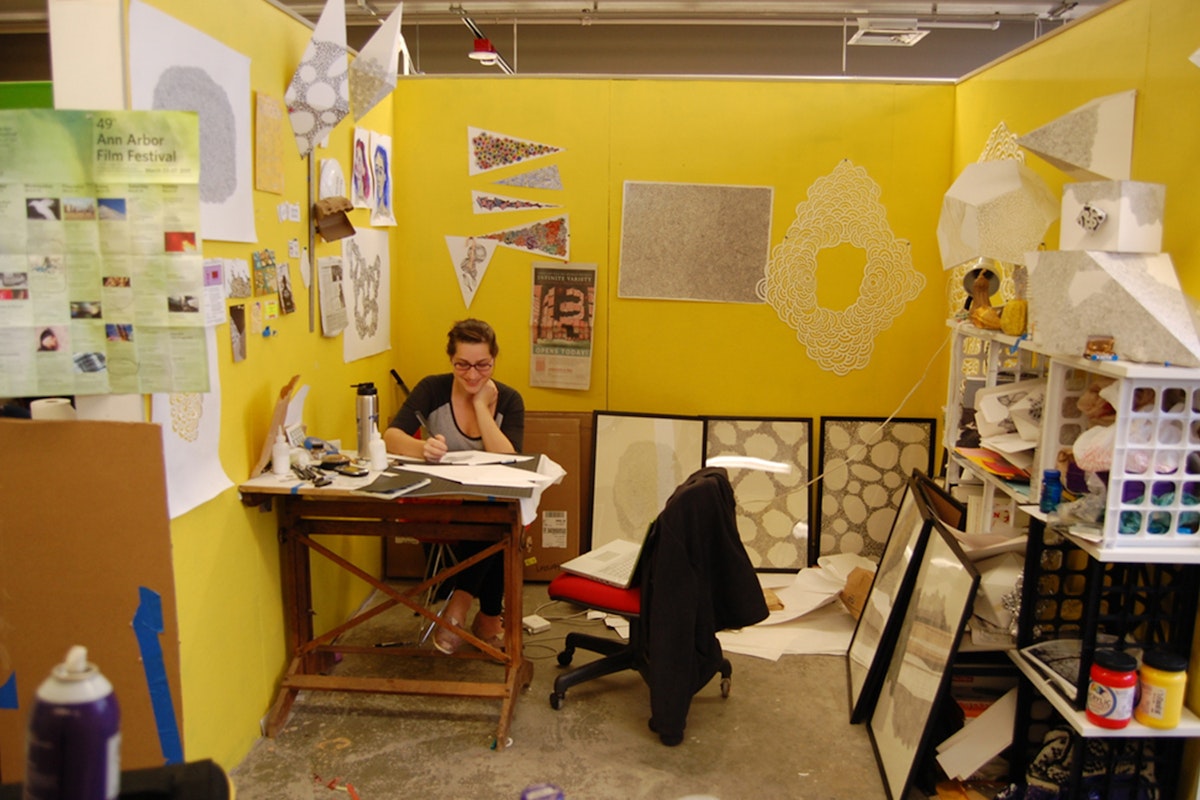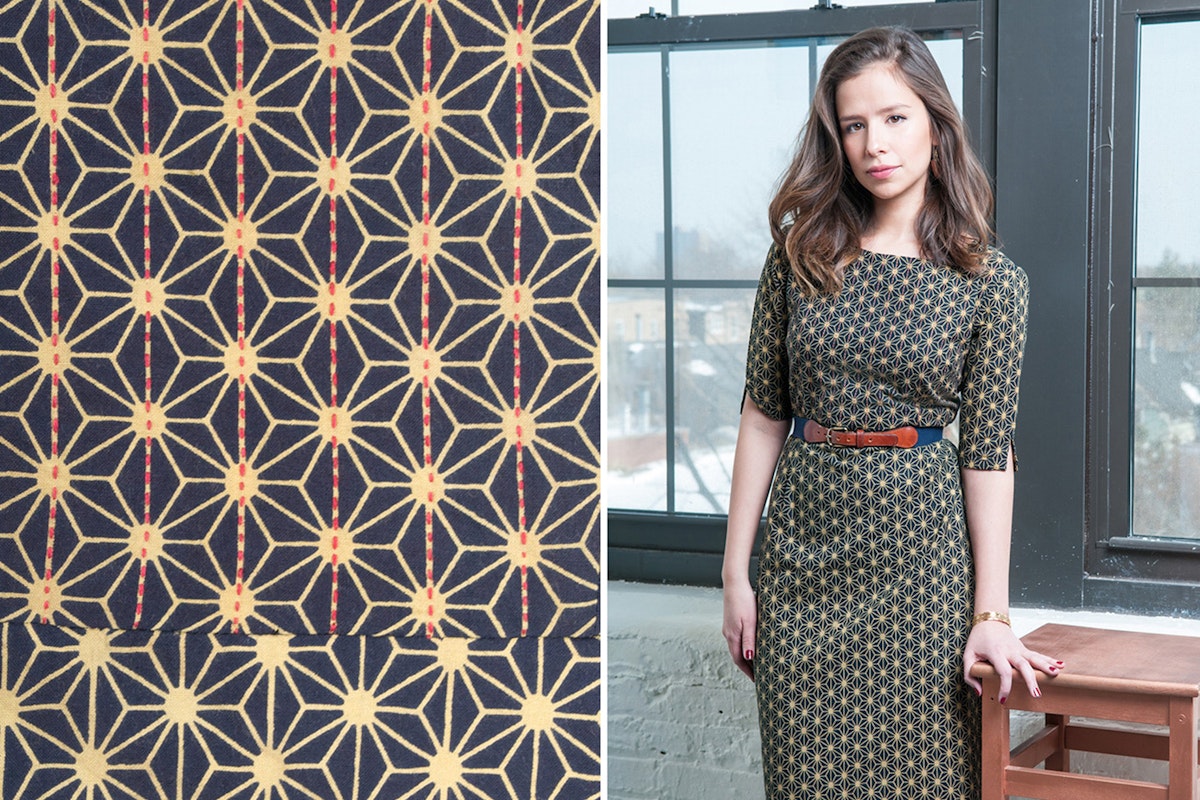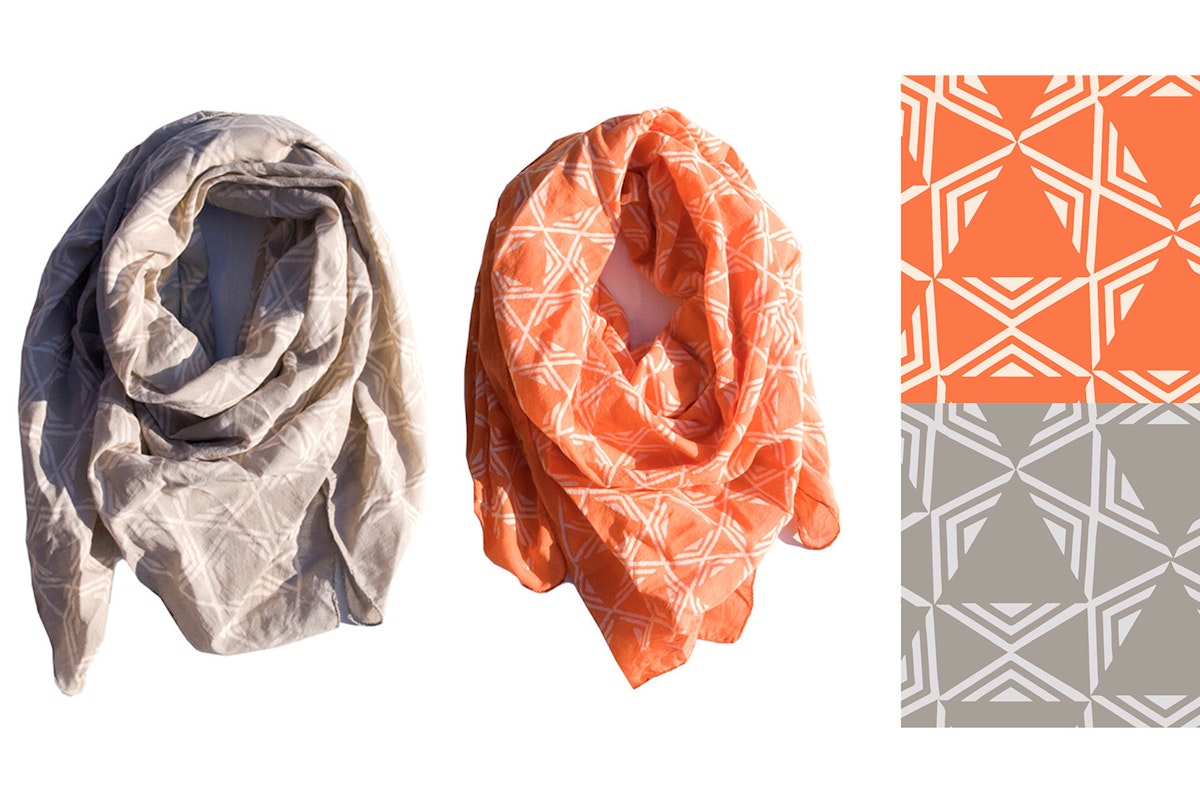Creative Careers: Shifra Whiteman (BFA ‘11)
Shifra Whiteman (BFA '11) took the time to answer questions about her career, work, and life after Stamps while preparing for the inagural Career Bootcamp.
When you think back to your time at Stamps, what are the top memories that float to the surface?
Memory #1: When I got to Stamps, I had only really worked in drawing and painting. I remember taking a tour of the 3D studios (ceramics studio, metal shop, wood shop, etc.) and upon entering the wood shop, I fell in love with the smell. After TMP 1, I decided to take furniture design and would spend so many nights in that shop building a loveseat for my final project. At the time, I thought I would definitely move back to NYC and would need seating for my future apartment, so knowing that NYC has small spaces, I made sure to include a bookshelf in the loveseat design. I happened to be working on it every time Brian Banks would give prospective students tours, and he would always say, “Shifra came here all the way from NYC and had only used a pencil and paintbrush. Now she's all about the saw and a drill. Magical things happen at Stamps!” It made me feel special, like I can do anything!
Memory #2: I come from a family where sports isn't really a big deal, so coming to U-M was a huge culture shock when it came to football and team spirit. Luckily for me, everyone else would spend Saturday at the game and I would spend it in the fibers studio, blasting Buena Vista Social Club and singing on the top of my lungs while screen printing huge bolts of fabric.
Memory #3: I.P. was a really important time for me. I was going through a rough time with my family, and my project kept me sane. It became my therapy, in a way. There were nights where my row in the studios would stay until 3 or 4 in the morning. We would work, order No Thai! and encourage each other to keep at it and work through things. I was lucky that my neighbors in the IP studios were also my housemates and some of my best friends.

These days, you're a successful freelance artist/designer with a bustling business at shifrawhiteman.com. Your products are really beautiful and you're skilled in so many different mediums (surface design, jewelry design, structures, installations, and a great variety of commercial design objects). Can you tell me a bit about how you manage your creative practice day-to-day? How do you strike a balance between creative process and the business end of things?
It took a really long time to get that balance. For a while, the happiest medium was a “pay the bills” part-time job that had nothing to do with art or design, and then focus the other days on freelancing. I needed to be able to calm myself from the stress of keeping afloat. If I didn't make any money freelancing one month, I at least had enough to not get evicted. It's real life and that's a real problem. Once I got the hang of that, I began freelancing more and got comfortable taking on bigger/more jobs during certain times of the year and learned to save a certain percentage for those months where I knew I wouldn't be able to make ends meet. It takes time to figure it all out.
Time management is 100% the most important lesson I've learned in my years of freelancing. I need to give myself certain time restrictions and plan/map out my week accordingly.

It also looks like you're pursuing a master's degree. Can you talk about what you hope the experience will bring to your career and creative practice?
I decided that I didn't want to get my MFA because while I am always improving my craft, I wanted to learn something that would compliment what I already learned at STAMPS and what I already do on a daily basis. I knew I wanted to start my own business for a while, but was always really nervous about the finances and legal issues that go with it. For a while, I thought I would just find that perfect business partner who would deal with all that, and I would focus on the creative side. But the reality is that it's sometimes better to just learn the business end and be able to make both business and creative decisions. That's why I decided to pursue a Master's Degree in Arts Management at Columbia College Chicago.
What feeds your creative practice? What are you doing when you're not working?
At this point, I have put most freelancing on hold to focus on the business I've started with my friend and sister (also a STAMPS alum) called PINTL+KEYT. It has fueled me to check out entrepreneurship groups and co-working spaces in Chicago, which has energized me in different creative ways. I also love riding around Chicago on my bike, going to museum events, meeting other creative individuals and learning how they succeed in their fields, and occasionally making a piñata and then smashing it for stress relief.
How does your undergraduate experience at Stamps inform your work, your methodologies, your philosophy, and your skills?
Stamps impacted me in such a profound way because it forced me to think beyond what I already knew.
I could have stayed in painting, which is what I was doing in high school, but was forced to build a stool from wood (thanks Jan-Henrik Anderson!) and that made me fall in love with furniture. After trying furniture and realizing it wasn't the best fit (my ability to mess up math was unbelievable), I still wanted to be in the field - so I decided to focus on textiles so I could upholster things. That let me to Sherri Smith who opened my eyes to repeat patterns and screen printing, which became my obsession for three semesters before I studied abroad at an intensive textile design program in Denmark. That experience gave me the current technological skills and networking ability to start freelancing and landed me an awesome internship with Mata Traders, a fair-trade fashion company in Chicago, after graduation. I don't think I would have even taken a fibers class if I hadn't been inspired by furniture in the first place, but having professors that pushed you to try everything and encouraged you to figure out what you really were passionate about rather than stick with what you "feel like you do well", really made a difference in my arts education and life.

What do you wish Stamps did a better job of when it came to preparing you for a career?
I was pretty clueless when it came to the business of freelancing. I knew nothing about pricing my work, I never saw a contract before and I had little concept of what copyright was. These are all things I had to figure out on my own and not in the best way. I would have loved a Freelancing 101 course, or something like this Career Bootcamp available to me while I was a student.
When you were an undergraduate at Stamps and envisioned your post-graduation life, what did it look like? What are the similarities? What are the differences?
I hoped to get hired by a corporate company like Nike or Target, and create their textiles. At the time, I wanted a steady salary and to make things look pretty. Looking back, I'm glad I didn't move across the country to where those companies are based, because I love Chicago and I learned so much working for smaller companies that have social missions. I learned what it really takes to start a business, and loved the struggle of being part of it. Don't get me wrong - it wasn't easy at times, but I wouldn't have learned half of what I know now if I had settled for a steady paycheck.
Generally speaking, what traits do you wish you saw more of in creative practitioners looking to make a living doing the work that they love?
Generally speaking, it's not all about your artistic skill. That is a huge part of it, but what is equally as important is professionalism and understanding the business end. Nobody wants to re-hire a freelancer if they did an amazing job but delivered it five days late, or was unclear about who owned the rights in the end because they didn't read a contract closely enough. These pieces are part of the puzzle that create a successful living/career in the arts.
If you could go back in time and give any words of wisdom to your 18 year old self, what would you say?
I would tell myself to breathe, keep doing what you're doing, and take advantage of your resources. I wouldn't be where I am today if I changed what I did when I was 18, but I do wish that I would have spent a few more nights learning to work the CNC router or letterpress, had one more conversation with Professor Ed West, and met all of the graduate students. You never know when someone will have the connection you need or when you'll need to know the basics of a different technology/system to push your piece to the next level.
Visit shifrawhiteman.com to see more of Shifra's work.
Images courtesy of Shifra Whiteman. Title image features Whiteman with pillows designed by Katie Chappuis, a member of Whiteman's Pintl+Keyt design team.